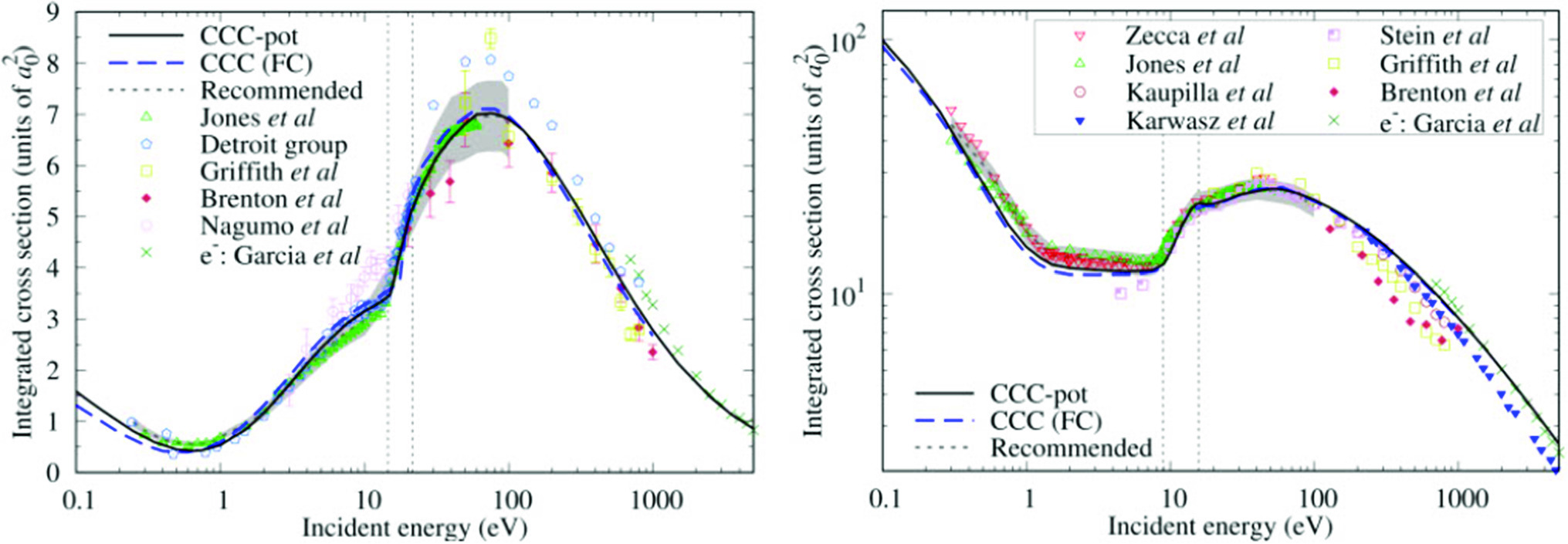https://doi.org/10.1140/epjd/s10053-024-00809-7
Regular Article - Atomic and Molecular Collisions
Convergent close-coupling calculations of positron scattering from neon and argon
Department of Physics and Astronomy, Curtin University, 6102, Perth, Western Australia, Australia
Received:
2
October
2023
Accepted:
23
January
2024
Published online:
9
February
2024
Positron scattering from the noble gas atoms neon and argon is calculated using the single-center convergent close-coupling (CCC) method. Unlike previous CCC calculations, we have relaxed the frozen-core approximation by fully opening the outermost s and p shells, and find better agreement with experiment for excitation energies and dipole polarizability. We have used this improved structure model to calculate elastic, elastic differential, total, momentum-transfer, electron-loss, and total bound excitation cross sections. We have applied a complex model potential calculation, scaled to our single-center CCC results, to obtain direct ionization and positronium-formation cross sections for these systems. This complex model potential was also used to calculate results between the positronium-formation and ionization thresholds, giving complete results from  eV to 5000 eV. Overall, good agreement is observed with past theory and experiment for most transitions.
eV to 5000 eV. Overall, good agreement is observed with past theory and experiment for most transitions.
© The Author(s) 2024
 Open Access This article is licensed under a Creative Commons Attribution 4.0 International License, which permits use, sharing, adaptation, distribution and reproduction in any medium or format, as long as you give appropriate credit to the original author(s) and the source, provide a link to the Creative Commons licence, and indicate if changes were made. The images or other third party material in this article are included in the article’s Creative Commons licence, unless indicated otherwise in a credit line to the material. If material is not included in the article’s Creative Commons licence and your intended use is not permitted by statutory regulation or exceeds the permitted use, you will need to obtain permission directly from the copyright holder. To view a copy of this licence, visit http://creativecommons.org/licenses/by/4.0/.
Open Access This article is licensed under a Creative Commons Attribution 4.0 International License, which permits use, sharing, adaptation, distribution and reproduction in any medium or format, as long as you give appropriate credit to the original author(s) and the source, provide a link to the Creative Commons licence, and indicate if changes were made. The images or other third party material in this article are included in the article’s Creative Commons licence, unless indicated otherwise in a credit line to the material. If material is not included in the article’s Creative Commons licence and your intended use is not permitted by statutory regulation or exceeds the permitted use, you will need to obtain permission directly from the copyright holder. To view a copy of this licence, visit http://creativecommons.org/licenses/by/4.0/.





